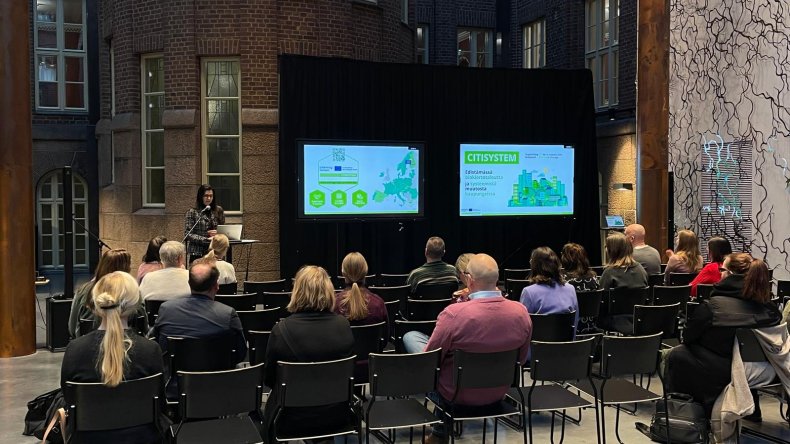2nd Regional Dissemination Event in Lahti, Finland

In the presentations, the audience heard how the project Work and Food by the Lahti Diaconia Institute has successfully developed Lahti food aid model that also serves as a low-threshold employment platform. The project offers easily accessible support for those in need of food aid meanwhile improving job opportunities for those in difficult labor market situations and facilitating the recruitment of non-native workers. Project manager Riikka Flink lead the development of the Lahti’s model for effective food aid. Surplus food is collected for example from schools and distributed to customers through various collection delivery points around the city.
Next, Päijät-Hämeen Ateriapalvelut (Päijät-Häme Food Services) presented the impressive result how they had been able to reduce food waste by nearly 5,400 kg in 2024 compared to the previous year. This improvement was made possible for example by implementing the Hukka food waste program’s AI system in spring 2024. The system helps to predict food demand, ensuring that right amount of food is ordered and prepared. Additionally, food waste has been reduced by selling climate-friendly lunches and through ResQ mobile application, with over 15,000 surplus meal portions sold in 2024.
Päijät-Hämeen Ateriapalvelut has collaborated with the Work and Food project to make use of surplus food from certain multi-purpose centers. The partnership has been deemed effective, and the number of participating centers has increased. According to Outi Luukkonen, representative of Päijät-Hämeen Ateriapalvelut, interest in surplus food has grown to the point where there is not always food left for donation. The city youth services have also collected surplus food from schools for youth centers, which has proven to be very effective. School meals have been particularly well received by young people that are visiting local youth centers after school.
Impressive work to reduce food waste has been done also at Salpaus Further Education Centre, where surplus food is donated to students. In two years, the total amount of biowaste has decreased by 26 %. Student feedback has been encouraging, and the initiative has also reduced overproduction in the institution’s restaurants. According to Head of Education Marko Viljamaa from Salpaus, about 10–60 students collect surplus food daily, with the highest demand after weekends on Mondays.
In addition, an interesting example from local retail operator Osuuskauppa Hämeenmaa showing the company’s ambitious goal to halve the food waste from their operations by 2030. Hämeenmaa’s Selection and Responsibility Manager Niina Toivonen presented various initiatives including demand forecasting, discount labeling, evening double discounts, and surplus food boxes that are all found to be effective measures. Hämeenmaa also donates food aid to organizations and charities.
CITISYSTEM project team
 lab [dot] fi
lab [dot] fi lab [dot] fi
lab [dot] fi